Supporting Seniors With Clear Instructions for Managing Health Emergencies
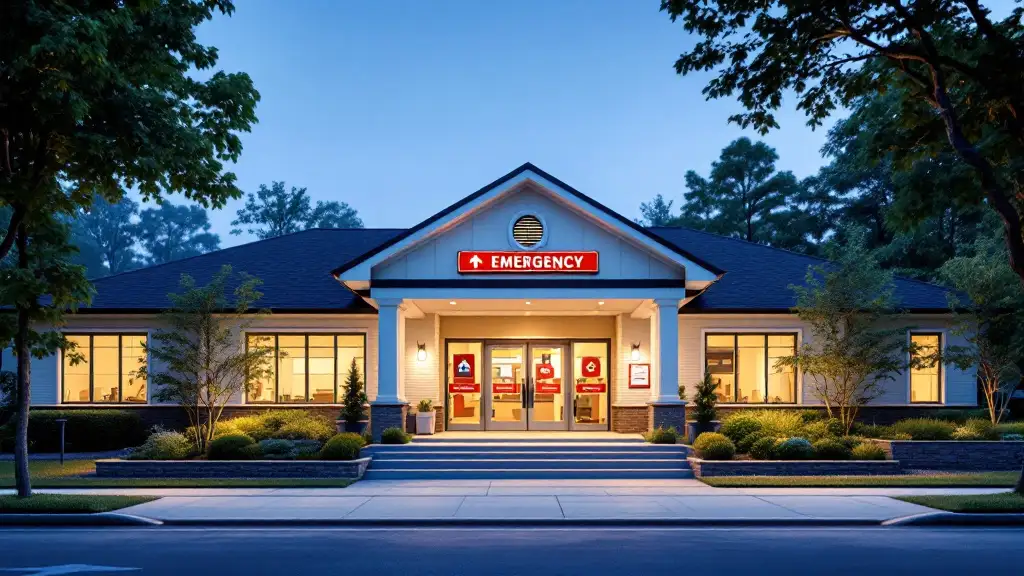
Understanding the Importance of Tailored Emergency Support for Seniors
As the population of older adults grows globally, ensuring their safety during health emergencies becomes a vital concern. Disasters pose unique risks to seniors, especially those with chronic health conditions, mobility challenges, or cognitive impairments. This article explores comprehensive strategies to support seniors effectively, emphasizing preparedness, safety planning, caregiver roles, community resources, and public health initiatives. Implementing clear instructions and tailored plans helps seniors maintain their health and safety, reduce stress during crises, and recover more swiftly after emergencies.
Essential Emergency Preparedness Strategies for Older Adults
What are essential emergency preparedness strategies for older adults?
Older adults face increased risks during disasters, making tailored preparedness critical. Developing a personalized disaster plan that considers their health, mobility, and cognitive needs is fundamental. This plan should include familiarization with local response options such as evacuation routes, shelter locations, and alert systems.
Creating a detailed support network involving family, friends, neighbors, caregivers, and community organizations ensures help is readily available. Regularly practicing emergency procedures, updating contact lists, and reviewing the plan every six months keep preparedness current.
Assembling a comprehensive emergency kit is equally vital. This should contain a 3-7 day supply of water, non-perishable food, medications, medical supplies, assistive devices, important personal documents, a flashlight, batteries, clothing, and extra cash. Keeping these supplies accessible both physically and digitally, such as scanning documents or storing info in a secure app, facilitates quick response.
Older adults should stay informed by signing up for emergency alerts through local authorities, monitoring weather updates, and utilizing resources like NOAA Weather Radio, TV, radio, and the FEMA app. Learning about potential local hazards and response plans enhances situational awareness.
Planning for safe evacuation involves identifying multiple accessible routes from the home, arranging transportation, and selecting suitable shelters equipped to accommodate mobility or health needs. Preparing an emergency communication plan includes updating contacts, using multiple communication methods, and ensuring devices are charged and functional.
Locating and safeguarding important documents like medical records, insurance policies, legal directives, and power of attorney forms facilitates smoother post-disaster recovery. Making copies stored securely at home and digitally ensures quick access.
Furthermore, older adults should consider backup power options for medical devices, prepare for extended power outages, and include weather-related considerations, especially during public health emergencies.
In sum, comprehensive planning, resource assembly, ongoing education, and community engagement are vital for ensuring safety and resilience among older adults during disasters.
Safety Planning and Management for Health-Related Emergencies
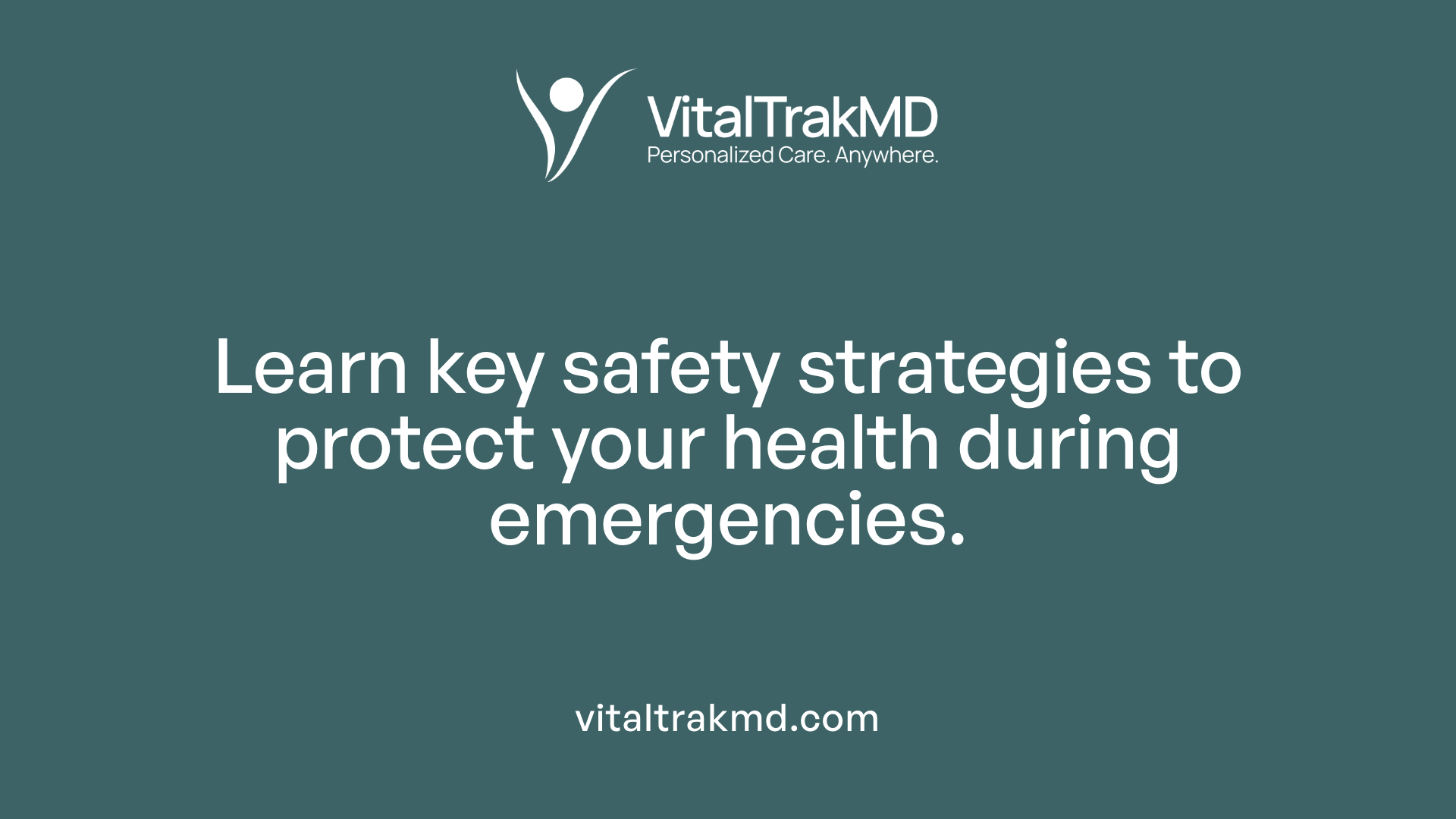
What safety planning strategies are recommended for seniors facing health emergencies?
Effective safety planning is crucial for older adults, especially those with ongoing health conditions. It begins with assessing individual health, mobility, and cognitive needs to understand specific risks and requirements.
Creating a personalized emergency plan is essential. This plan should include clear evacuation procedures, strategies for managing medications, and access to all essential medical devices. It is important to identify accessible shelters and routes, considering mobility restrictions, and to involve caregivers in planning.
Building a support network comprising family members, friends, neighbors, and healthcare providers ensures assistance is readily available during crises. Maintaining up-to-date contact information and establishing communication protocols are vital components.
Preparing a comprehensive emergency supplies kit is recommended. It should include at least a 30-day supply of medications, medical supplies, non-perishable food, water, and necessary personal items. Guarding important documents such as medical records, insurance papers, and legal directives ensures quick access when needed.
Sign-up for local emergency alerts and warnings keeps seniors informed about upcoming or ongoing events. Arranging backup power solutions such as generators or UPS devices for critical medical equipment helps maintain health management during power outages.
Involving caregivers in routine drills and safety procedures solidifies readiness. Additionally, safety measures like installing means safety devices, defining accessible escape routes, and ensuring a safe home environment contribute significantly to minimizing risks during health-related emergencies.
By adopting these comprehensive strategies, older adults can better manage health emergencies, reduce risks, and ensure quicker, safer responses to unexpected situations.
Supporting Caregivers in Emergency Situations
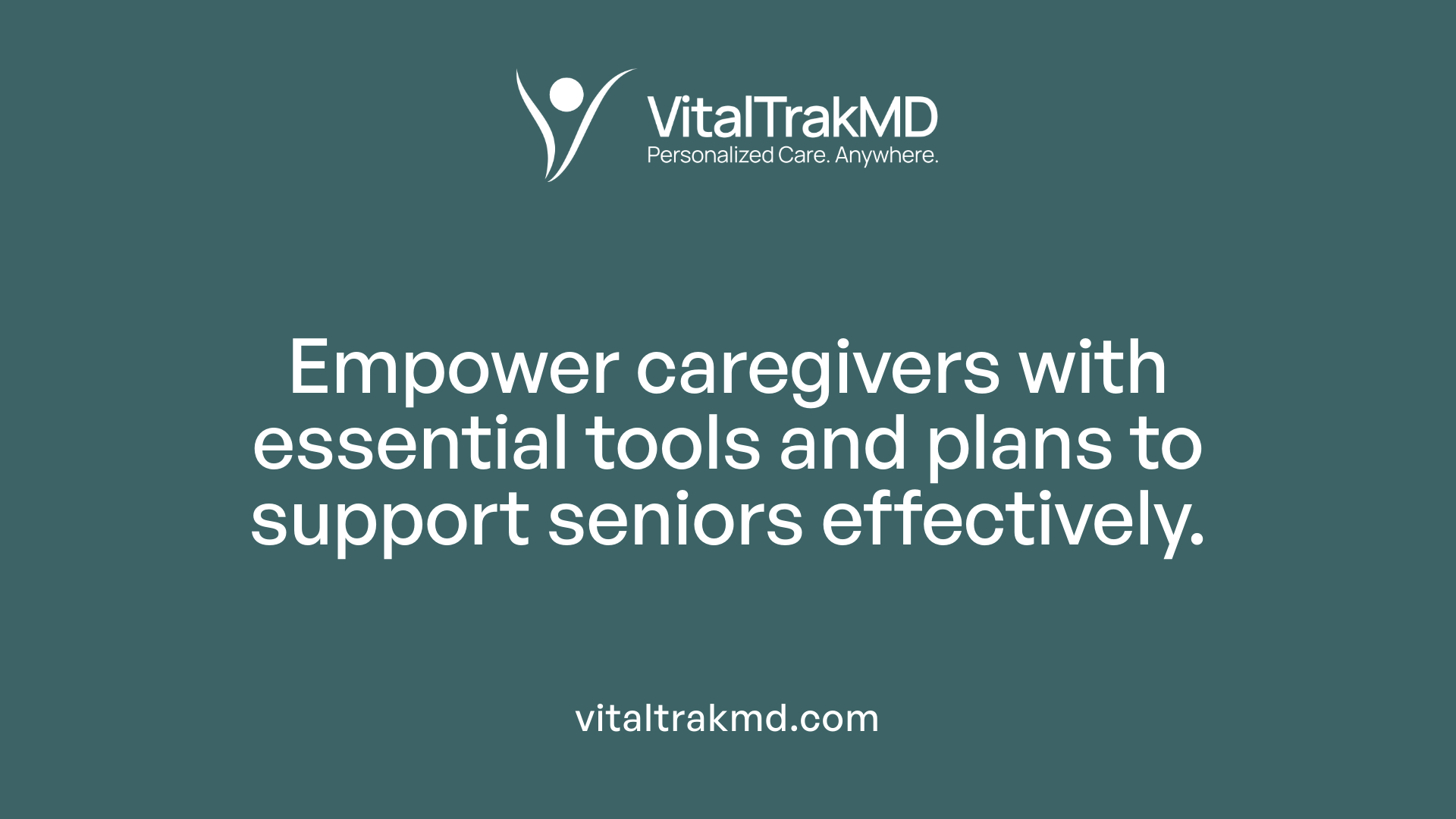
How can caregivers support seniors during health emergencies?
Caregivers play a vital role when emergencies occur, especially for older adults with specific health, mobility, or cognitive needs. One of the first steps is developing a personalized emergency plan tailored to the senior’s health status, physical abilities, and mental condition. This plan should include clear evacuation procedures, medication management, and information on medical devices or assistive aids.
Building and maintaining supportive networks is essential. Caregivers should establish connections with family members, friends, neighbors, healthcare providers, and community resources. These networks offer emotional reassurance and practical assistance, such as transportation or in-home support.
Having an emergency supplies kit is crucial. It must include at least a 30-day supply of medications, vital documents, water, non-perishable food, clothing, and essential medical supplies. This ensures that seniors can sustain themselves during prolonged emergencies or if access to services is disrupted.
Staying informed is another key aspect. Caregivers should help seniors sign up for local alert systems and establish reliable communication plans. This might involve using mobile alerts, radio, or direct calls from caregivers.
Emotional well-being is equally important. During stressful times, providing reassurance, stress management techniques, and psychological support helps seniors cope better. Practicing emergency drills regularly ensures familiarity with procedures, reducing confusion and anxiety.
Finally, a proactive approach involves regularly reviewing and updating the emergency plan, practicing response actions, and ensuring all supplies and important information are current. This comprehensive support network and preparedness strategy can significantly improve safety and health outcomes for seniors during emergencies.
Creating Effective Emergency Response Plans with Family and Community Support
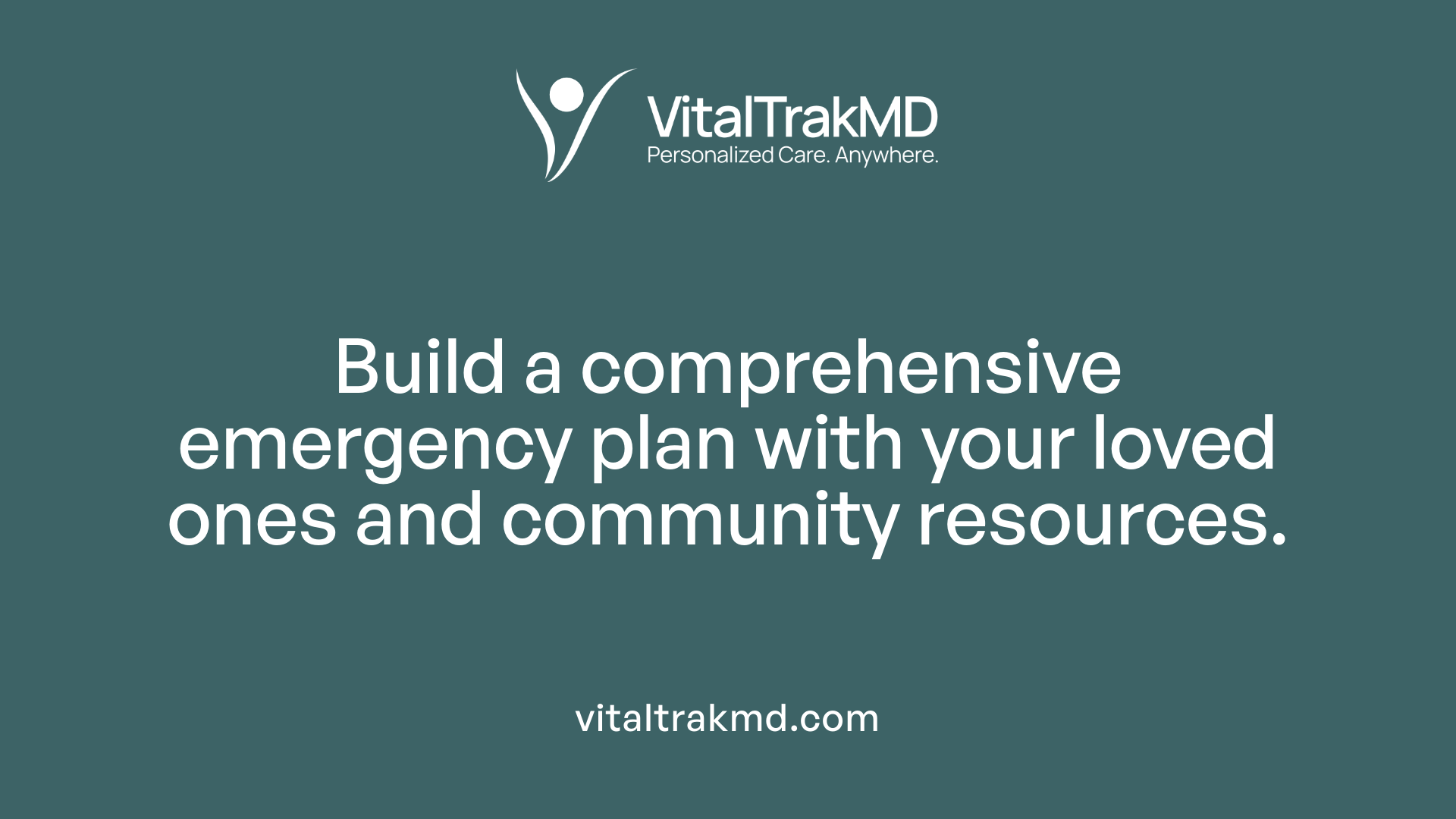
How can seniors and their families create effective emergency response plans?
Developing a strong plan for emergencies is essential to protect older adults. It starts with a detailed assessment of the individual's health status, mobility limitations, and cognitive needs. Recognizing these personal factors helps tailor the plan to specific risks and safety requirements.
Families should map out clear communication strategies, including updating and sharing contact information with all support persons. Establishing evacuation procedures is crucial, such as identifying multiple routes and accessible shelters suited to mobility needs. Assigning roles within the support network ensures everyone understands their responsibilities.
Preparing an emergency kit containing medications, medical devices, water, non-perishable food, personal documents, and safety items like flashlights and batteries ensures readiness. Regularly practicing the emergency plan through drills helps reinforce actions and identify areas for improvement.
Maintaining up-to-date health and legal documents, such as insurance policies, power of attorney, and advance directives, is vital for quick access during crises. Creating a comprehensive support network involving family members, neighbors, caregivers, and local community organizations facilitates coordinated assistance.
Community resources, like local emergency services, senior centers, and disaster preparedness agencies, provide valuable guidance and support. Participating in community drills and utilizing resources like specialized checklists from the Red Cross or Ready.gov can enhance preparedness.
By taking these steps—assessing individual needs, planning meticulously, practicing regularly, and leveraging community assets—families can develop an effective emergency response plan that ensures swift, coordinated action when disaster strikes.
Best Practices for Managing Chronic Conditions During Emergencies
What are best practices for assisting seniors with chronic health conditions during emergencies?
Supporting older adults with chronic health issues requires comprehensive planning and proactive measures. The process begins with creating a personalized emergency plan that carefully considers their medical conditions, mobility limitations, and sensory impairments. This plan should be reviewed and updated regularly to adapt to any changes in health status or circumstances.
A critical component is ensuring the continuity of medications and medical treatments. Seniors should coordinate with their healthcare providers to obtain sufficient prescriptions, have copies of their medical records, and maintain an emergency kit that includes their medications, medical devices, and condition-specific supplies. Backup power sources, such as battery packs or generators, are essential to keep medical equipment operational during power outages.
Building a robust support network involving family members, friends, caregivers, and local community resources can facilitate effective assistance during crises. Clear communication plans and emergency contacts help maintain connection and ensure that help is available when needed.
Preparation of an emergency kit tailored to their health needs is vital. This kit should include medications, assistive devices like canes or walkers, non-perishable food, water, and important personal documents such as health records and insurance papers. Including extra batteries, chargers for medical devices, and backup power options enhances safety.
Utilizing community resources and alert systems can alert seniors and caregivers about impending emergencies, and can provide guidance and support during the event. Planning transportation and identifying accessible shelters ensure that seniors can evacuate safely if necessary.
Monitoring health status and recognizing warning signs are crucial. Seniors and caregivers should be educated about symptoms that require immediate attention and know how to respond appropriately. Connecting with local health departments and organizations like the Red Cross or the National Institute on Aging can provide additional support and resources.
Overall, a tailored approach focusing on medical continuity, accessible communication, and community integration significantly improves the safety and well-being of seniors managing chronic conditions during emergencies.
Additional Resources and Community Support for Emergency Preparedness
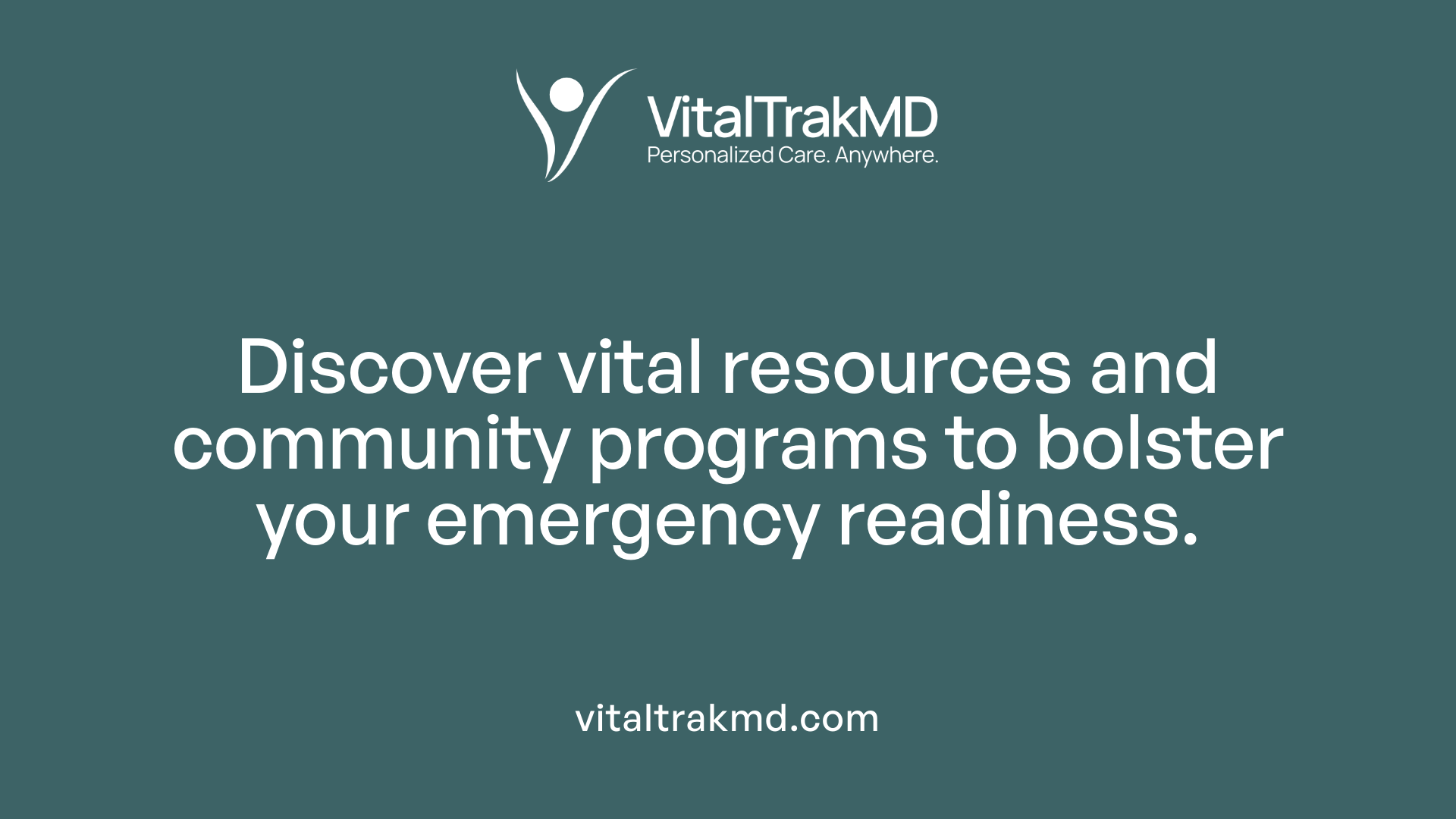
Where can seniors and caregivers find resources and guides to improve safety during emergencies?
Seniors and caregivers have access to a variety of trusted sources for emergency preparedness information. Government agencies such as FEMA (Federal Emergency Management Agency), the Department of Homeland Security, and local emergency management offices often provide comprehensive guides, checklists, and educational materials designed specifically for older adults.
Non-profit organizations like the American Red Cross and the National Institute on Aging develop tailored resources that cover essential topics such as assembling emergency kits, creating communication plans, and understanding evacuation procedures. These materials frequently include worksheets and step-by-step instructions to help seniors evaluate their personal needs and prepare accordingly.
Community-based programs and senior centers also offer workshops and drills focused on disaster readiness. These activities enhance awareness, reinforce safety protocols, and encourage active participation among older adults.
Accessing guides from Red Cross, FEMA, and other agencies
The Red Cross provides a wealth of tools, including detailed checklists for emergency kits, safety tips for various types of disasters, and resources tailored for individuals with cognitive or physical impairments. Additionally, FEMA offers downloadable guides that help seniors assess risks in their area, learn evacuation routes, and establish local support networks.
These resources can typically be accessed online or requested via mail, ensuring older adults and their caregivers can obtain printed or digital copies suited to their preferences.
Joining community drills and educational programs
Participating in emergency drills organized by local agencies or senior organizations helps familiarize seniors with evacuation procedures, shelter locations, and safety protocols. Such practice boosts confidence and readiness. Educational sessions often cover important topics like CPR, first aid, and medication management during crises.
Many communities also host seminars that address specific concerns such as accessibility challenges, managing chronic conditions during emergencies, and supporting mental health in post-disaster situations.
Connecting with senior support organizations
Organizations dedicated to aging and health, including local chapters of AARP or Area Agencies on Aging, maintain networks of resources, volunteer programs, and emergency planning services. They help coordinate support for vulnerable seniors, assist with creating personalized safety plans, and facilitate connections with emergency services.
These groups frequently collaborate with health providers, shelters, and community volunteers to ensure comprehensive assistance during emergencies.
Using technology and apps for alerts and planning
Digital tools play a vital role in emergency preparedness. Many agencies offer mobile apps and alert systems that notify seniors of weather warnings, evacuation orders, and nearby shelters. Signing up for emergency alert services such as NOAA Weather Radio, FEMA notifications, or local alert systems ensures timely updates.
Some apps also allow users to store vital health and emergency information, communicate with caregivers, and receive tailored safety advice. Configuring these tools before a disaster strikes enhances communication, safety, and peace of mind.
| Resource Type | Examples | Benefits | Additional Notes |
|---|---|---|---|
| Government Guides | FEMA, Ready.gov | Comprehensive, official advice | Available online; printable versions for offline use |
| Nonprofit Resources | Red Cross, AARP | Tailored for seniors, practical tips | Often include checklists, first aid, and support contacts |
| Community Programs | Local emergency drills, workshops | Hands-on experience, familiarity | Enhance confidence and understanding |
| Mobile Apps & Alerts | FEMA App, NOAA Weather Radio | Real-time updates, communication | Ensure devices are charged and alerts are activated |
By utilizing these diverse resources, older adults and their caregivers can build a robust safety net, ensuring preparedness and resilience in the face of emergencies.
Public Health Strategies to Enhance Disaster Resilience among Seniors
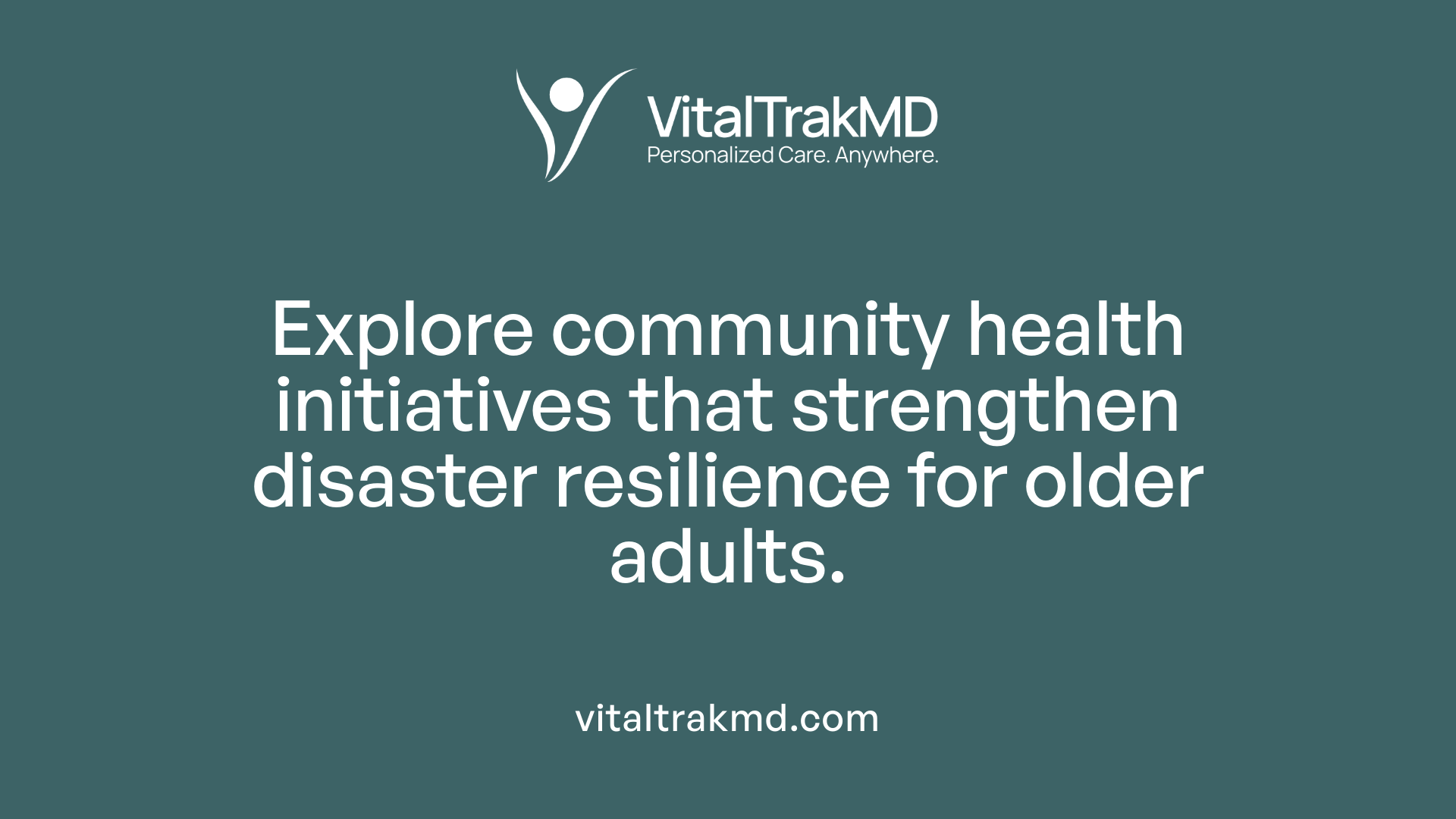
What public health strategies support disaster resilience among seniors?
Supporting older adults during disasters requires comprehensive public health strategies tailored to their distinct needs. One effective approach is developing community-based support systems. These include maintaining registries of vulnerable seniors, establishing partnerships with local shelters, and ensuring that emergency accommodations are accessible and suitable for those with mobility or health issues.
Education campaigns play a pivotal role in raising awareness. These campaigns should focus on practical topics such as assembling emergency kits, understanding evacuation procedures, and managing chronic health conditions during emergencies. Utilizing accessible communication methods—like large print materials, audio messages, and local outreach—ensures that critical information reaches all seniors.
Improving healthcare access and emergency services is essential. Strategies include creating portable medical records, establishing backup plans for medication management, and working with healthcare providers to prepare seniors for potential disruptions. These measures help maintain continuity of care during crises.
Building strong social networks is also vital. Families, friends, neighbors, and community organizations form a support web that can be activated quickly during emergencies. These networks facilitate communication, aid in evacuation, and provide emotional support, reducing isolation and vulnerability.
Addressing mobility and health challenges in disaster planning involves identifying accessible shelters, ensuring the availability of assistance devices, and preparing specific safety measures for seniors with cognitive impairments like dementia. Considering pet or support animal needs is equally important to prevent additional stress and ensure safety.
Implementing these strategies collectively can significantly enhance resilience, ensuring that seniors are better protected, informed, and supported before, during, and after disasters.
Prioritizing Preparedness to Protect Our Seniors
Effective emergency management for seniors hinges on comprehensive planning, tailored safety measures, active caregiver involvement, and robust community support. By educating older adults about disaster risks, encouraging regular drills, ensuring access to vital resources, and fostering strong societal networks, we can significantly improve their resilience and safety during health emergencies. Empowering seniors with clear instructions and timely information not only reduces risks but also enhances their confidence and independence in facing emergencies. Collective effort—across families, communities, and public health agencies—is essential for safeguarding the well-being of our aging population in times of crisis.
References
- Older adults and disasters: How to be prepared and assist ...
- Emergency Preparedness for Seniors
- Older Adults Emergency Preparedness
- Emergency Preparedness for Seniors: Planning and ...
- Emergency Planning for Seniors With Chronic Health Issues
- The Best Ways for Seniors to Prepare for Emergencies
- Older Adults: Disaster Planning
Recent articles
Want to Feel Better and Live Healthier?
Join hundreds of patients taking control of their health with personalized care that fits their life – not the other way around.
Rated 4.8/5 by 32+ customers







